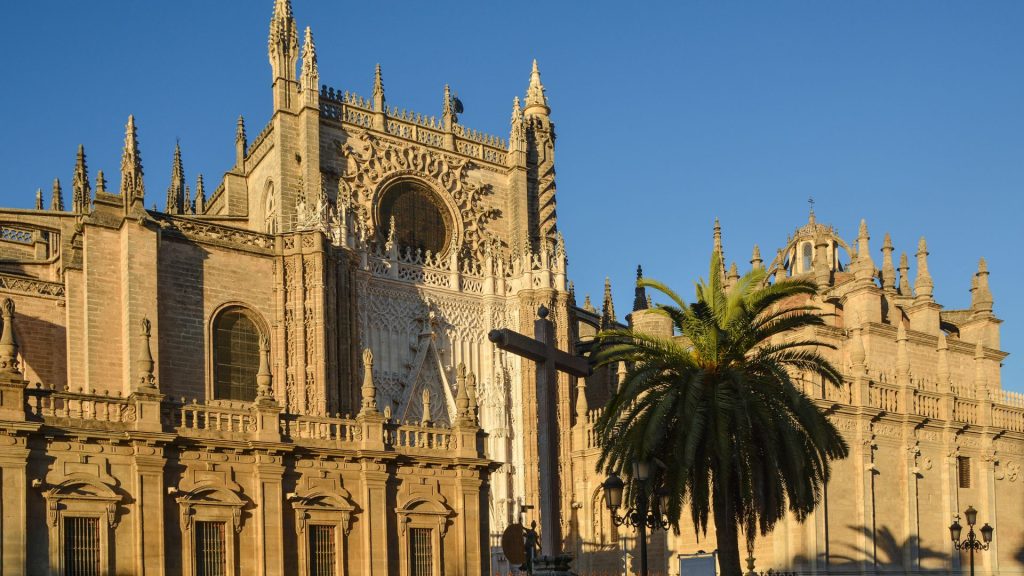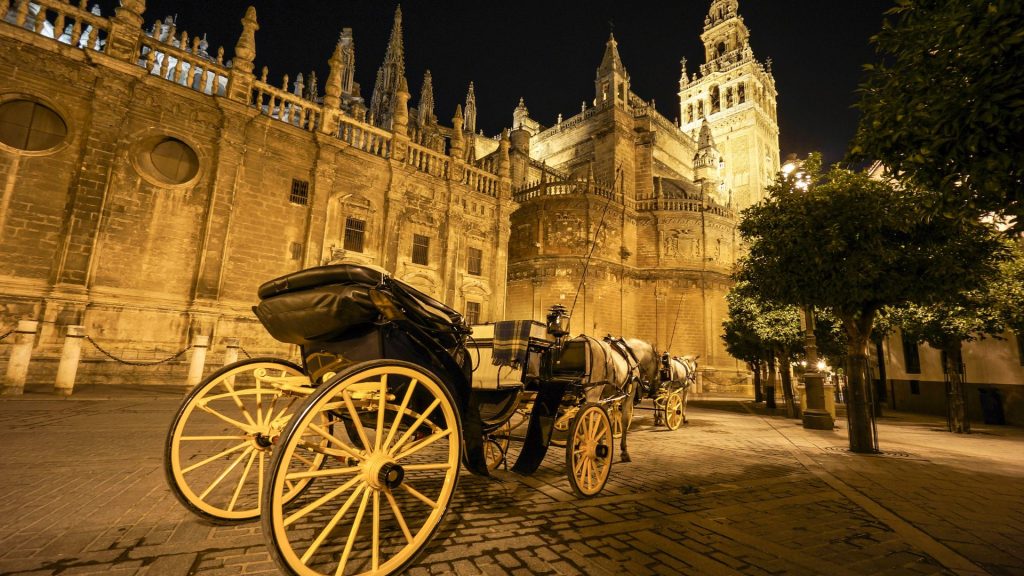
The 7 most beautiful churches in Seville: History, Legends & Insider Facts
The 7 most beautiful churches in Seville
Seville is home to some of Spain’s most stunning churches, where history, art, and tradition come together. From the majestic Seville Cathedral to hidden Baroque gems like Santa María la Blanca, each tells a unique story through its architecture and legends. This guide explores seven of the most beautiful churches in Seville, with insider details, fascinating history, and little-known facts that bring each one to life. Whether you’re planning your first visit or returning to discover more, these sacred landmarks are essential stops for anyone wanting to understand the city’s soul.
“Every street in Seville leads to a story — the best are whispered from its church walls.”
1. Seville Cathedral (Catedral de Santa María de la Sede)
In 1401, Seville’s leaders decided to replace the city’s former mosque with a new Christian cathedral, declaring they would make it so magnificent that “those who see it finished will think we are mad.” They kept their word. Today it stands as the largest Gothic cathedral in the world, recognized by UNESCO for its architectural and cultural significance.
The vast interior holds treasures at every turn — from the intricately carved choir stalls to chapels lined with paintings by Spanish masters. The Main Altarpiece alone is a marvel, layered with gold leaf and storytelling in wood. Beneath the soaring vaults rests the tomb of Christopher Columbus, his remains journeying here centuries after his voyages.
Outside, the Giralda Tower rises as Seville’s most iconic silhouette. Originally the minaret of the city’s mosque, it’s climbed not by stairs but by a gentle ramp, once designed for horseback ascents. The view from the top stretches over the rooftops, courtyards, and winding streets of the city.
Legend: Stories persist of a sealed chamber within the Giralda said to hold the treasures of the Catholic Monarchs, though its existence has never been proven.
Address: Avenida de la Constitución, s/n, 41004 Sevilla, Spain
2. Church of El Salvador (Iglesia Colegial del Divino Salvador)
Standing in the busy Plaza del Salvador, this church is a baroque masterpiece with a history stretching back far beyond its current walls. Beneath it lie traces of a Roman basilica and the Great Mosque of Ibn Adabbas, making it one of the city’s oldest sites of worship.
The current 18th-century structure glows in the afternoon light, with its warm stone façade leading into an interior of marble columns, rich carvings, and gilded altarpieces. The Main Altarpiece is particularly striking, depicting biblical scenes with almost theatrical detail.
One of its most cherished treasures is the Virgin of the Waters, believed to have protected the city during both drought and flood. The church is also deeply connected to Holy Week: the Hermandad del Amor begins its procession here, filling the square outside with solemn music and anticipation.
Address: Plaza del Salvador, s/n, 41004 Sevilla, Spain
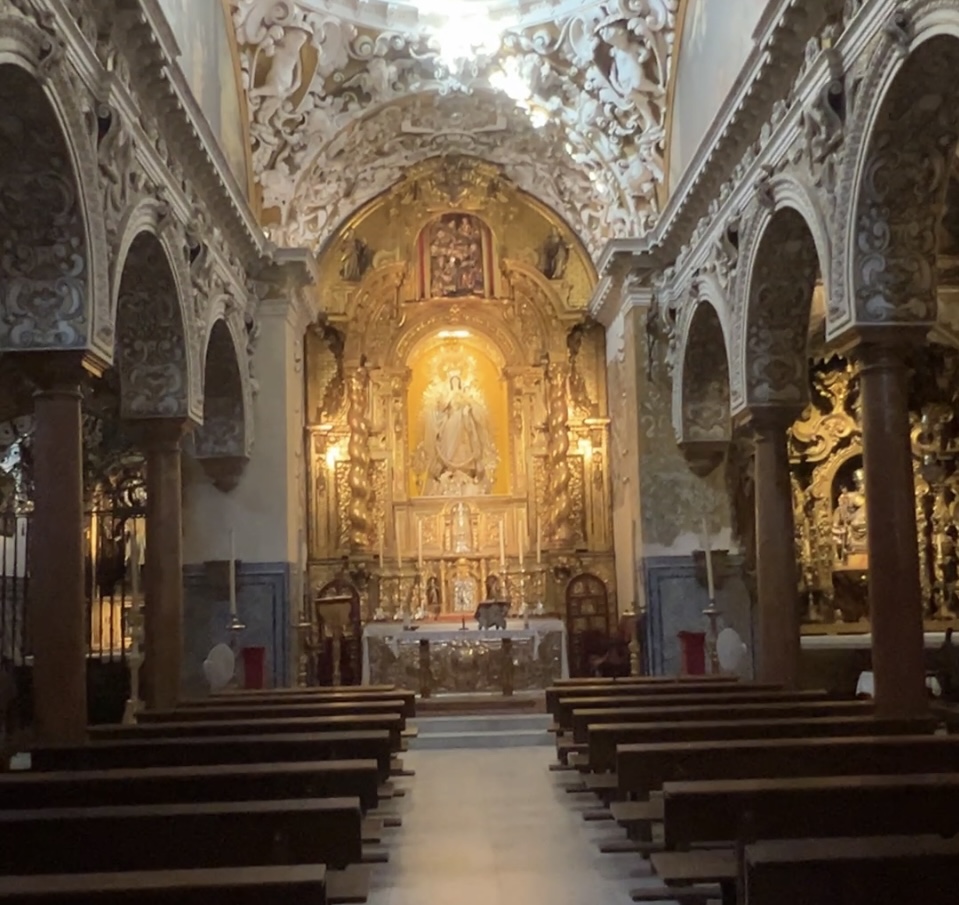
3. Santa María la Blanca Church
Set in the heart of what was once Seville’s Jewish Quarter, Santa María la Blanca is smaller and more intimate than many of the city’s churches, but its history is no less rich. It began as a synagogue before being converted into a Christian church in 1391.
In the 17th century, it was transformed into the Baroque gem we see today, with sculpted plasterwork curling across the walls and ceiling like lace. The soft light inside gives a special glow to Murillo’s Last Supper, one of the church’s greatest treasures.
Legend: Local tales speak of a secret passage connecting the church to nearby noble houses, said to have been used for discreet meetings during troubled times.
Address: Calle Sta. María la Blanca, 5, 41004 Sevilla, Spain

4. Church of San Luis de los Franceses
San Luis de los Franceses is one of the purest examples of Andalusian Baroque — an architectural style that balances theatrical beauty with deep symbolism. Built by the Jesuits in the early 18th century, it was designed as a perfect symmetrical space, with the high dome drawing the eyes upward to a vision of heaven.
The interior is a symphony of gold, frescoes, and sculpted wood, each detail loaded with meaning tied to Jesuit teachings. After falling into disuse, the church has been meticulously restored and now welcomes visitors not just for worship, but also for concerts and cultural events that fill its walls with music again.
Address: Calle San Luis, 37, 41003 Sevilla, Spain
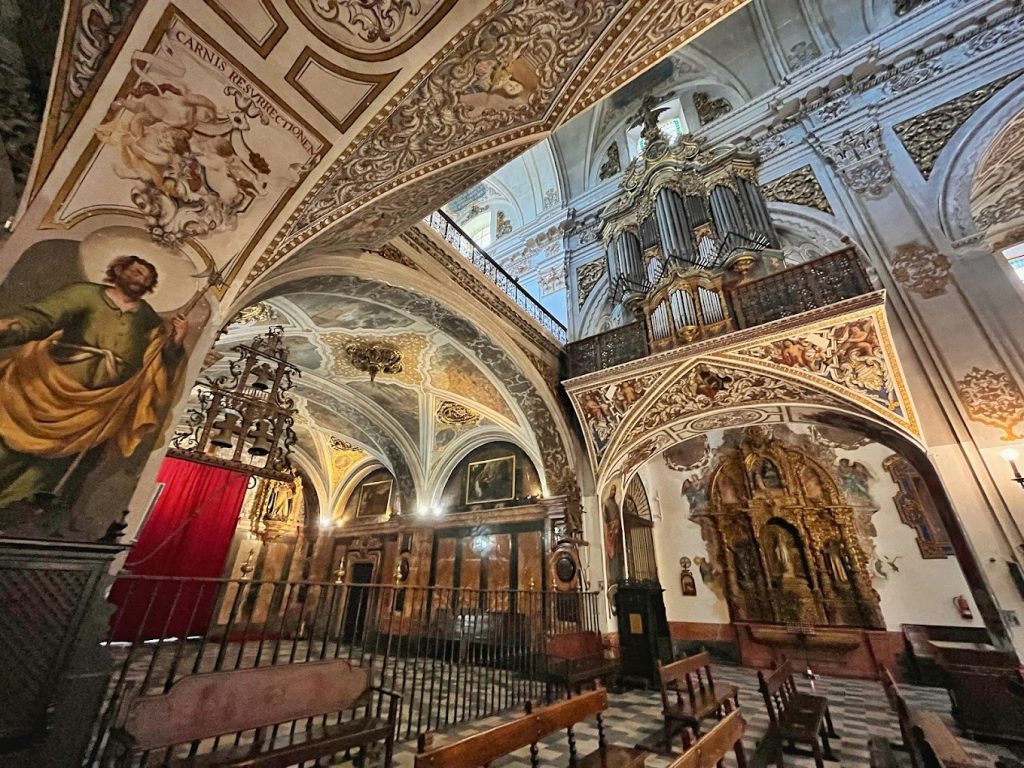
5. Church of La Magdalena (Iglesia de la Magdalena)
Once part of a Dominican monastery, La Magdalena is impossible to overlook thanks to its vivid red-and-ochre façade. Inside, its Baroque altarpieces, painted domes, and carved figures create a rich, almost theatrical atmosphere.
The church plays an important role during Holy Week as the starting point for the silent and deeply moving procession of the Hermandad del Calvario.
Legend: Stories from centuries past tell of the bells ringing by themselves one night to warn of an approaching flood, a mystery that still lingers in local memory.
Address: Calle San Pablo, s/n, 41001 Sevilla, Spain

6. Basilica of La Macarena (Basílica de la Esperanza Macarena)
Home to the Virgin of Hope, this basilica is a center of devotion unlike any other in the city. Built in the mid-20th century, it was created to honor an image whose influence reaches far beyond Seville. Her glass tears, delicate lace, and embroidered robes draw thousands of faithful and curious visitors alike.
During Holy Week, her procession moves through the city at night, surrounded by candles and the soft singing of saetas, carrying with it an atmosphere that is both solemn and full of hope.
Special Fact: In the Spanish Civil War, women of the Macarena district formed a human chain to protect her image from harm — a story that still inspires pride in the neighborhood.
Address: Calle Bécquer, 1, 41002 Sevilla, Spain
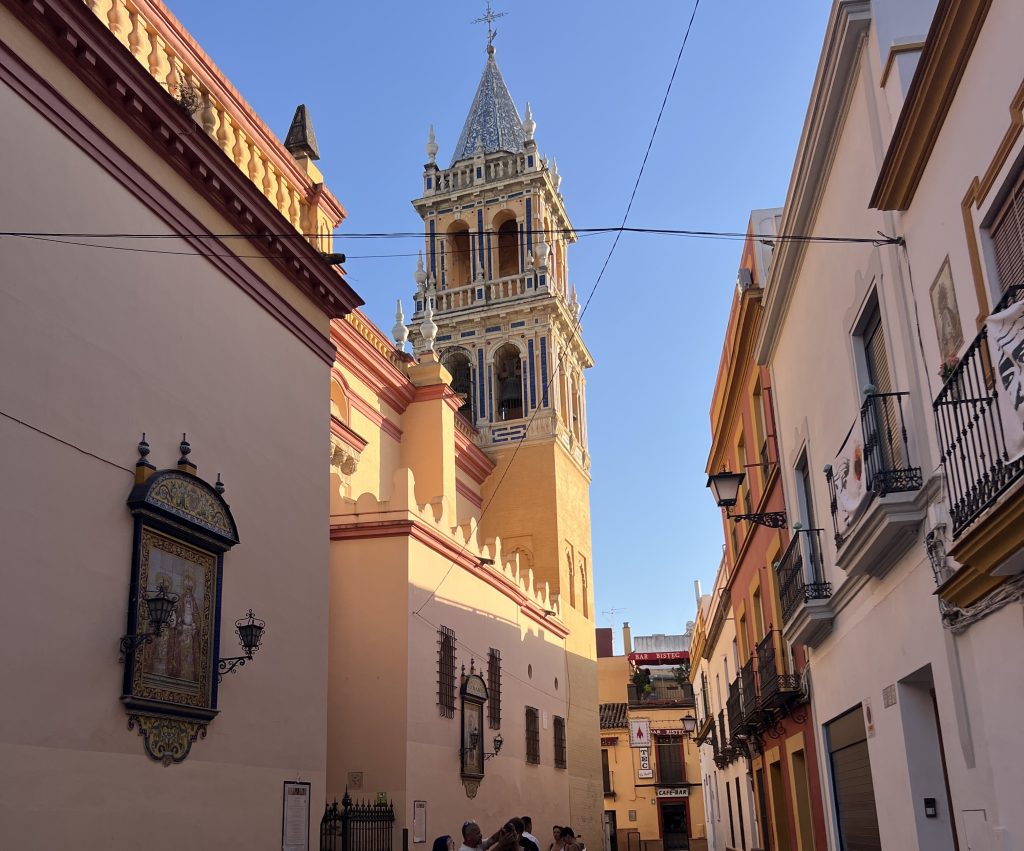
7. Church of Santa Ana (Iglesia de Santa Ana) – Triana’s Gothic Treasure
Across the river in the Triana district, Santa Ana is the oldest surviving church in Seville. Founded in 1276 by King Alfonso X “the Wise,” it was built in thanks to Saint Anne after the king’s recovery from illness.
The building’s Gothic-Mudejar style reflects its medieval origins, while its chapels contain altarpieces and images that have been venerated for centuries. Among them, Our Lady of the Rosary holds a special place in the hearts of Triana’s residents.
Legend: Fishermen once carried small tokens from Santa Ana with them on their journeys, believing she would protect them from storms at sea.
Address: Calle Vázquez de Leca, 1, 41010 Sevilla, Spain


